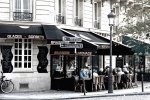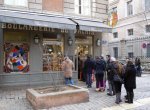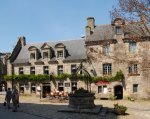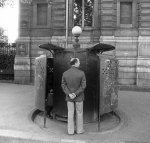parks in paris
The city boasts some 450 parks, public gardens and green spaces. Some are prestigious and historic, and adorned with fine sculpture.
Bois de Vincennes
The Bois de Vincennes is on the eastern edge of Paris, and is the largest public park
in the city, created between 1855 and 1866 by the Louis Napoleon.
The park contains the Château de Vincennes, a former residence of the Kings of France; an English landscape garden with four lakes; a zoo; an arboretum; a floral garden; a horse-racing track; a velodrome for bike races, and the campus of the French national institute of sports and physical education.
Bois de Boulogne
The Bois de Boulogne lies along the western edge of the 16th
arrondissement, near Boulogne-Billancourt and Neuilly-sur-Seine. It was created
between 1852 and 1858 during the time of Louis Napoleon.
It is the second-largest park in Paris, slightly smaller than the Bois de Vincennes and is 2½ times the size of Central Park in New York, and comparable in size to Richmond Park in London.
Within the boundaries of the Bois de Boulogne you will find an English landscape garden with several lakes and a cascade; two small botanical and landscape gardens, the Château de Bagatelle and the Pré-Catelan; a children's amusement park in the Jardin d'Acclimatation; the Jardin des Serres d'Auteuil, holding more than a hundred thousand plants; two tracks for horse racing; and a tennis stadium where the French Open tennis tournament is held each year.
Jardin des Plantes
Situated in the 5th arrondissement, on the left bank of the Seine,
this historic Botanical Garden of Paris was opened to the public in 1640, and
is one of seven departments of the Muséum national d'histoire naturelle.
The Jardin des Plantes includes four galleries of the Muséum: the Grande Galerie de l'Évolution, the Mineralogy Museum, the Palaeontology Museum and the Entomology Museum. In addition to the gardens there is a small zoo, founded in 1795 by Bernardin de Saint-Pierre with animals from the royal menagerie at Versailles.
Jardin des Tuileries
With its ancient and modern statuary, the Tuileries Garden is
a public garden between the Louvre Museum and the Place de la Concorde, in the
1st arrondissement. Created by Catherine de Medicis as the garden of the
Tuileries Palace in 1564, it was eventually opened to the public in 1667, and
became a public park after the French Revolution.
Jardin du Luxembourg
This is a pleasant Latin Quarter park with a pond alongside
a palace, popular with students and young children. The Jardin du Luxembourg,
or the Luxembourg Gardens, is the second largest public park in Paris and located in the 6th arrondissement. The park is
the garden of the French Senate, which is itself housed in the Luxembourg
Palace.
Parc Montsouris
Located in the 14th arrondissement, Parc Montsouris is a
public park, at the southern edge of Paris directly south of the centre. Opened
in 1869, the Parc is one of four large urban public parks, along with the Bois
de Boulogne, the Bois de Vincennes and the Parc des Buttes Chaumont, created by
Napoleon III and his Prefect of the Seine, Baron Haussmann, at each of the
cardinal points of the compass around the city, in order to provide green space
and recreation for the rapidly-growing population of Paris
Parc des Buttes-Chaumont
This is possibly the city‘s most picturesque, boasting
dramatic bluffs and man-made grottos. The Buttes-Chaumont is the steepest and
the largest of the 470 gardens of Paris, with the exception of the Tuileries
Gardens and the Parc de La Villette. It is a landscaped park, an evolved form
of the Anglo-Chinese garden, its irregular design opposing the regular form of
typical 'French' gardens.
Jardin du Palais-Royal
A haven of elegance in the very heart of Paris. The
Palais-Royal is in the 1st arrondissement. The screened entrance court faces
the Place du Palais-Royal, opposite the Louvre. Originally called the
Palais-Cardinal, the palace was the personal residence of Cardinal Richelieu.
Jardin japonais de l’UNESCO
A Japanese-style garden at the UNESCO headquarters, also
known as “Garden of Peace”. Historically, the garden is very important because
it is the first to be created by a sculptor rather than a gardener.
Jardin du Musée Rodin
An ideal spot to prolong your museum visit and discover
magnificent city views. The grounds are divided into a rose garden, north of
the Hôtel Biron, and a large ornamental garden, to the south, while a terrace
and hornbeam hedge backing onto a trellis concealed a relaxation area, at the
bottom of the garden.
Parc Monceau
Located in the 8th arrondissement, this lovely park contains
memorable statues of Musset, Maupassant, Chopin and other noteworthy French
figures. The park was established by Phillippe d'Orléans, Duke of Chartres, a
cousin of Louis XVI, fabulously wealthy, and active in court politics and
society. In 1769 he had begun purchasing the land where the park is located,
and in 1778, decided to create a public park, employing writer and painter Louis
Carrogis Carmontelle to design the gardens.
Parc André-Citroën
Sophisticated and contemporary, with several themed gardens,
Parc André Citroën is located on the left bank of the Seine, in the 15th
arrondissement. The park was built on the site of a former Citroën automobile
manufacturing plant, and is named after company founder André Citroën.
Parc de la Villette
The Parc de la Villette is one of the biggest parks in
Paris, located at the north-eastern edge of the 19th arrondissement. The park
houses one of the largest concentrations of cultural venues in Paris, including
the Cité des Sciences et de l'Industrie (City of Science and Industry),
Europe's largest science museum, three major concert venues and the prestigious
Conservatoire de Paris.
Parc de Belleville
Offering panoramic views of the whole city, the Parc de
Belleville, one of the parks and gardens of the 20th arrondissement, lies
between the Parc des Buttes-Chaumont and the Père Lachaise Cemetery. Located on
the hill of Belleville, this is the highest park in Paris. At the summit of the
park, an almost 30-metre tall terrace provides a panoramic view of the city.
The park was conceived by the architect François Debulois and the landscaper
Paul Brichet.
Parc de Bercy
Recalling the wine-dealing past of this modernised district,
Parc de Bercy is a group of three connected gardens in the 12th arrondissement,
and is one of the most important parks in the city. The 'Romantic' garden
includes fishponds and dunes; the 'Flowerbeds' are dedicated to plant life,
while the 'Meadows' are an area of open lawns shaded by trees. The park is
linked directly to the National Library of France by the Simone de Beauvoir
footbridge over the Seine.
Recent Articles
-
French Food and Drink - No BS Guide for lovers of Food, Wine, Liqueurs
Aug 28, 19 03:18 AM
Our guide to French food and drink for those who love traditional French food along with our no BS guide to understanding French wine and liqueurs
-
Things To Do In Carcassonne The Ultimate Tourist Guide
Aug 24, 19 06:26 PM
The ultimate tourist guide to things to do in Carcassonne when you visit this wonderful town in Aude France. Discover the places to go and see in Carcassone.
-
Lyon Old Town Guide to Vieux Lyon
Aug 18, 19 07:48 AM
Your complete guide to Lyon old town otherwise known as the Vieux Lyon. Don't miss this amazing part of the city if you're visiting Lyon in France.
-
18 French Villages You Must Visit Most Beautiful Villages in France
Aug 17, 19 06:31 AM
Our guide to the 18 most beautiful French villages you simply must visit. Loads of info, photos and facts in our ultimate villages in France tourist guide
-
What a Pissoir - The True Story of France's Unique Urinals
Aug 13, 19 03:47 PM
Is there anything more French than a pissoir? Sadly on the decline nevertheless the pissor is an endring image of the country. This is their story





